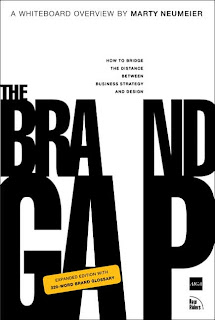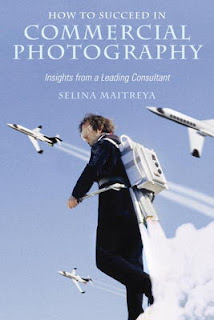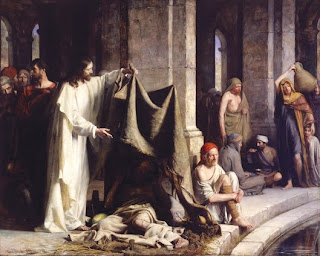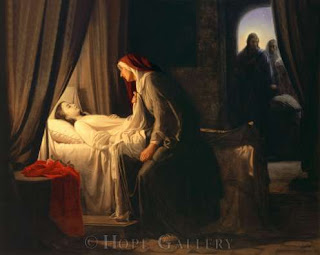Monday, March 28, 2011
How much do you spend???
Tuesday, March 15, 2011
Marketing


As of Lately I have been reviewing and editing the lectures for my advanced class. The class is created to help photographers with the business and marketing aspects of photography. I have been reading a couple of books on the subject and have made some very profound discoveries. The first book that I have been reading is a book by Selina Maitrea called "How to succeed in Commercial photography". Selina is a leading photography consultant that will work with all styles of photographers. Here technique on success starts with the photographers vision. This is the most important business quality that a photographer can develop. A photographers vision is what defines them in the market place. By developing a distinct vision the photographer will have a marketable product.
The next book I am reading is called "The Brand Gap" by Marty Neumeier. Neumeier Is a leading brand consultant and takes a more inside out approach to branding. He wrote "The Brand Gap" to help businesses get on the same page (so to speak) with the brand message that they are sending. His approach is more of collaboration of individuals giving input and working together to define a brand. This book has changed my view of branding all together. Most people think of brands as logotypes or design work to make something feel more professional... not at all! A brand lives inside of its customers. It is the gut feeling that people have about your service or product. ultimately we are not the ones defining our brand, our customers are!
I could get really carried away writing about this subject. If I did, I wouldn't have much to teach to my advanced students! Come take a class and learn how effective branding and marketing will really help your business. In the meantime I recommend purchasing and reading these two books.
Wednesday, March 2, 2011
Poor Little Bunny
I thought i Would share this funny little story for your enjoyment:Friday morning I wake up, and go to the bathroom. I walk in to find the medicine basket down with the nyquill spilled all over the counter. Hmm, jed must not be feeling well. I come out of the bathroom, Jed rolls over and mumbles something to the effect of "I'm really sick", and back to sleep. So..., I assume he has the flu. It has been going around our house if you haven't heard. I proceed to change up my hair appointment I had that morning, and continue on with my day. I go in an hour later to check on my sick husband, see what I can do for him. He wakes up super grumpy, I ask about his symptoms, and all he can muster up is that once again he is really sick, and back to sleep. An hour after that, it is now around 10am, jed rolls out of bed and sits at the kitchen table and stares at me all nyquilled up. "How are you feeling?" "Do you think you have what Jessey had?" still trying to be nice and understanding. HIs response to me is "No, it's just my throat, it's all sore and scratchy and dry". Yes, it's true. Jed had a sore throat on Friday. Poor little Bunny. This is funny alone, but then my friend Ashley shared this video entitled "Man Cold" from youtube. Check it out.
Wednesday, February 23, 2011
A Student Request... Printing!
Tuesday, February 15, 2011
Retouching Anyone????
Tuesday, February 8, 2011
About Me!

Jedediah Here!!
I have been a photographer for about 7 years now, and have worked in many different types of photography. I have done Everything from high fashion photography to automotive. One of my passions in life is to photograph old cars. Those of you that know me, know this about me, I love Cars. I love building cars and motorcycles. I have done this since I was a little boy. Growing up I would help my dad work on his 1936 ford Street rod. I enjoyed working with my hands and using tools.
So the question arises... How does an automotive mechanic get into photography? Funny you should ask. In order to answer this question correctly you need to know more about my family.
My mother is a very talented highly influential Ballet choreographer. She is well know throughout the world and has choreographed and preformed in places like China, Austria, Europe, and all over the United States. She is a highly creative individual with a vision that is unrivaled in here field. As a kid, I never really enjoyed going to the ballet. It was always a daunting task for my father to grab my brother and me to take us. Once I arrived, I would be easily mesmerized at the movement and beauty and the time seemed to fly. Once it was over I would go back to pretending that I didn't like it. My dear mother has influenced me greatly. I don't think she even knows. That is where i get my creativity and sense of composition. Because of her influence, I understand movement and how to make imagery move even though it may be a still photograph.
Now we all know that photography is a visual art form. and composition Is key to making a creative visually interesting photograph. But there is another side to photography that is equally as important. That is the technical side. What good is composition if you cant make a correct exposure. This is where my father's influence comes in.
My father is a machinist by trade, and a very brilliant man. I have seen him create, and problem solve my entire life. He can take any problem and find a solution that will not only fix the problem but enhance the performance in the solution. His work is also like art to me. It takes patience, and a careful hand to be a good machinist. It also takes a lot of knowledge and study to understand the different materials and reactions they might have while making a part. I worked with him for many years. I too learned this trade, I am so grateful for the lessons learned while working there. It is a profession that takes a lot of calculations and precision, in order to get a part that works properly.
As funny as it may seem... if you take these two professions and put them into a blender you would end up with photography. If you were to put these two people together you would end up with a child... me! Photography is the perfect blend of artistic and technical ability and that is why i have chosen it as my profession.
Tuesday, February 1, 2011
A night out


The Mrs and I were going through the usual motions on date night.
